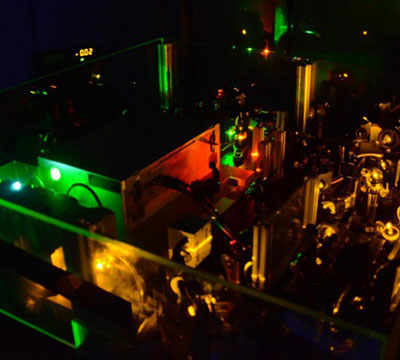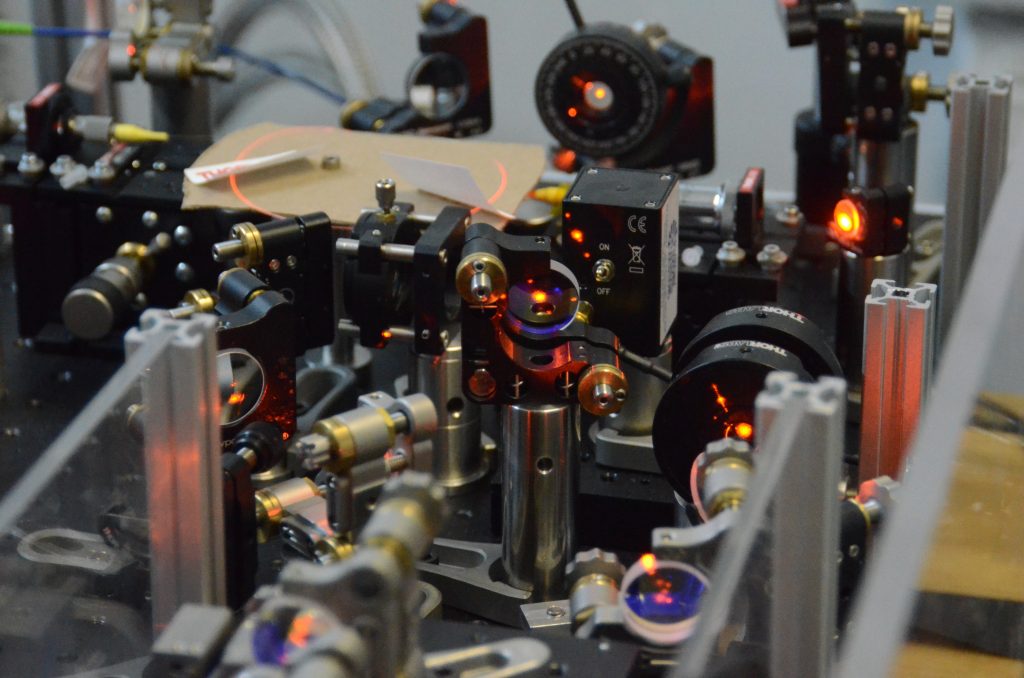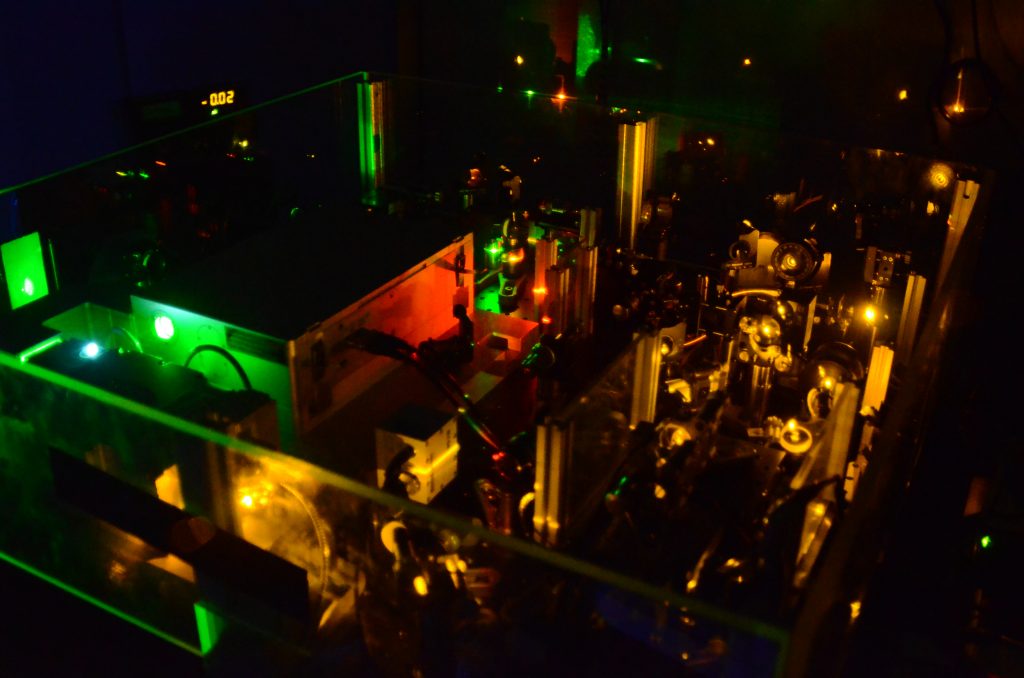
30 May Laser Frequency Comb testing
SALT tests a high accuracy and high precision calibration ruler for its High Resolution Spectrograph

Image: Details of the laser frequency comb. The horizontal brightly illuminated circle is the photonic crystal fibre that produces light covering a broad wavelenght range. All the markings on the spectroscopic ruler are generated by this highly tuned fibre.
Since last week, the Southern African Large Telescope (SALT) in Sutherland has been testing a Laser Frequency Comb, which is a calibration device that uses powerful lasers and photonic crystal fibres to produce the equivalent of a ruler that is both extremely long and has very finely spaced graduations. The pioneers of this decade old technology were awarded the Nobel Prize in Physics in 2005.
A team of laser physicists from the Heriot-Watt University, Derryck Reid and Richard McCracken, along with astronomers from SALT and South African Astronomical Observatory (SAAO), Éric Depagne, Rudi Kuhn, Nicolas Erasmus and Lisa Crause, installed the Laser Frequency Comb device on the SALT’s High Resolution Spectrograph (HRS) to perform the first routine comb-enabled scientific observations on a 10m-class telescope.
“The Laser Frequency Comb is a significant improvement in the way astronomers will calibrate their spectra in the future”, says Éric Depagne, project leader and HRS Instrument scientist. “It allows reaching much higher accuracies when measuring radial velocities, while adding something that is completely missing when using standard calibration sources – traceability. Since the electronic components and the optical devices are all linked to calibrated atomic clocks, we are sure that if we repeat the measurements in 20 years, they will be comparable to those we do today. And that is something fundamentally new”.

Image: View of the laser frequency comb showing the green, yellow and red light from its three lasers. The green light is used in the first stage of producing the comb. The yellow and red light are combined and injected into HRS, providing one of the most accurate calibrations known today.
Professor Derryck Reid from Heriot-Watt University said: “We’ve been developing the Laser Frequency Comb at Heriot-Watt University for 10 years and to finally demonstrate it on the SALT telescope is really exciting. Its accuracy and precision allows astronomers to derive precise fundamental parameters for a wide range of astronomical objects, from the existence of planets around distant stars, to the determination of the variability of the first generation of stars and the measurements of isotopic ratios that provide detailed information on the nature of supernovae”.
Astronomers determine the composition of stars by using spectrographs to split the light into various colours, exactly like water droplets produce rainbows when it rains. Each element we know in the Universe has a unique signature. Sodium, for instance produces bright yellow light, Neon glows red, and Magnesium has a blueish hue. By identifying the individual signatures of elements in the spectra of celestial objects, astronomers can infer the chemical composition, and many more parameters, such as the speed at which objects move relative to the earth, their temperature, and their mass.
In certain studies, astronomers must look for small changes in the colour of light emitted by stars. For example, the gravitational pull of a planet orbiting a star imprints a tiny wobble on the star, causing the colour of the star’s light to fluctuate by a small amount. As astronomers search for smaller, more “Earth-like” planets they need better tools with which to measure these tiny fluctuations. The Laser Frequency Comb could provide the precision measurement capability which is needed for this exciting new science.
Contacts
Dr Éric Depagne
SALT Astronomer, SAAO
Email: eric@saao.ac.za
Telephone: +27 (0) 21 201 5173
UK media contact:
Sarah McDaid, Pagoda PR
Email: sarah.mcdaid@pagodapr.com
Telephone: +44 (0) 131 556 0770

